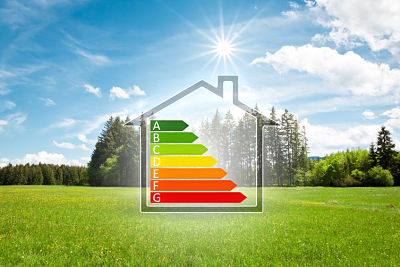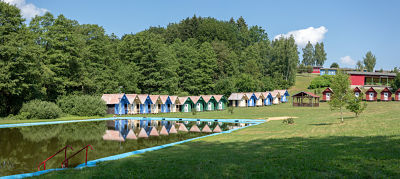
Being a landlord can mean looking after a range of properties, and having to be prepared for questions that may come at you from all angles. With the number of people living in rented accommodation on the rise, as well as the cost of living going up, renters are looking out to make sure that they’re getting the most out of their money.
Improving the energy efficiency of your property is a great way to help renters save on bills, as well as helping to reduce your costs in any communal areas. Not only will this be beneficial to your tenants, but it’s also an important consideration for reducing your carbon footprint, as part of your sustainability commitments or efforts. According to the Office for National Statistics, households are the highest contributor to UK greenhouse gas emissions, showing that this is something we collectively need to take action on.
Whether you’re looking to splash the cash on renovating your property to make it more energy-efficient or are just looking for some quick and simple improvements, there are lots of things that you can do. In this guest post, we’re taking a look at four improvements you can make to your property to improve energy efficiency.
Use Smart Heating to Become More Energy Efficient
Primarily one for your tenants, smart heating allows you to control your heating system via an app on your phone, so that the heating isn’t on when it isn’t needed. Not only does this cut down on the usage and bills, but it allows the property to be heated more consistently and efficiently. Whilst you might think that this involves installing a new, compatible heating system, this is often not the case. Each smart heating system provider will have a list of compatible systems, so that you can check before you buy.
The device allows users to set a base temperature, and when the temperature drops below this, it heats the home back to the base temperature. Rather than approaching heating with a binary on or off approach, causing the boiler to work harder to heat the home from a low starting temperature, this technology keeps things balanced.
The smartest ones even learn when you’re at home based on movement or optional location tracking, so that if the tenant’s routine changes, so does the heating, unlike a traditional thermostats where you have to set the times in advance. If it doesn’t detect movement, the smart thermostat changes to eco mode, lowering the temperature to a more efficient heat rather than keeping it at the set base level.
At an estimated cost of between £120 to £220 to buy, this is a relatively cheap fix that can make a big difference.
Improve the Energy Efficiency of a Property by Using Smart Meters
Smart meters work to measure the consumption of gas and electricity in your property, as well as allowing the tenant to see how much they are spending on these utilities. If a tenant is seeing their bills rise but isn’t sure why, a smart meter can be a great way to track what is using electricity, and then the tenant can make changes to try and get these levels to drop.
They are also helpful on a national level, as they allow electricity and gas companies to get real information about quantities of utilities used, as well as peak times for usage. In the future, this will help better match supply with demand, which in turn helps reduce the amount of extra power emitted from fossil fuels when it’s not needed.
The government currently requires all energy suppliers to give their customers smart meters for free, so make sure your tenants know that they can take advantage of this scheme, or get one installed for them if you manage their bills.
Install Heat Pumps to Improve a Property’s Energy Efficiency
If you have the space, why not consider installing a heat pump? Whilst landlords who manage flats might struggle, those who have houses with an outdoor space can utilise this option. It is possible to install a heat pump in a flat, but you’ll need to look at an air source heat pump, rather than the air-to-water one we discuss below.
There are several different types of heat pump, but the most common domestic type is an air-to-water heat pump. This works by transferring heat from the outside air into water, which then flows through the radiators or gets stored in a hot water cylinder. This works via a heat exchanger, so it does not need to be warm outside for it to work.
Whilst the initial outlay is expensive, you can expect to reduce your CO2 emissions by around 2650kg per year when compared to an A-rated gas boiler. Make sure to do your research if you’re looking to save money, as savings depend on the system that you already have installed.
Buy Energy Efficient Electric Appliances to Save On Energy Bills
If you’re looking for new appliances, then consider the benefits of installing energy-efficient appliances like an induction hob. With an induction hob, no heat is wasted, as all of the heat generated goes straight into the pan, rather than being lost to the room. They also cook food faster, so that the hob is in use for less time.
If you look to install an induction system, make sure to let your tenants know in advance, as they’ll need to ensure that they have pans that contain metal that works with induction. You could also look to replace fridges and freezers with more energy-efficient models – look out for an energy rating label when you buy. Items are rated from A to G, with A being the most efficient. This is a great way to improve the energy efficiency of your property, reducing both your bills and your carbon footprint.
These are just four of the many ways you can improve the energy efficiency of your property. We hope these help you on your way to making your property more attractive to tenants and reducing your carbon footprint.



